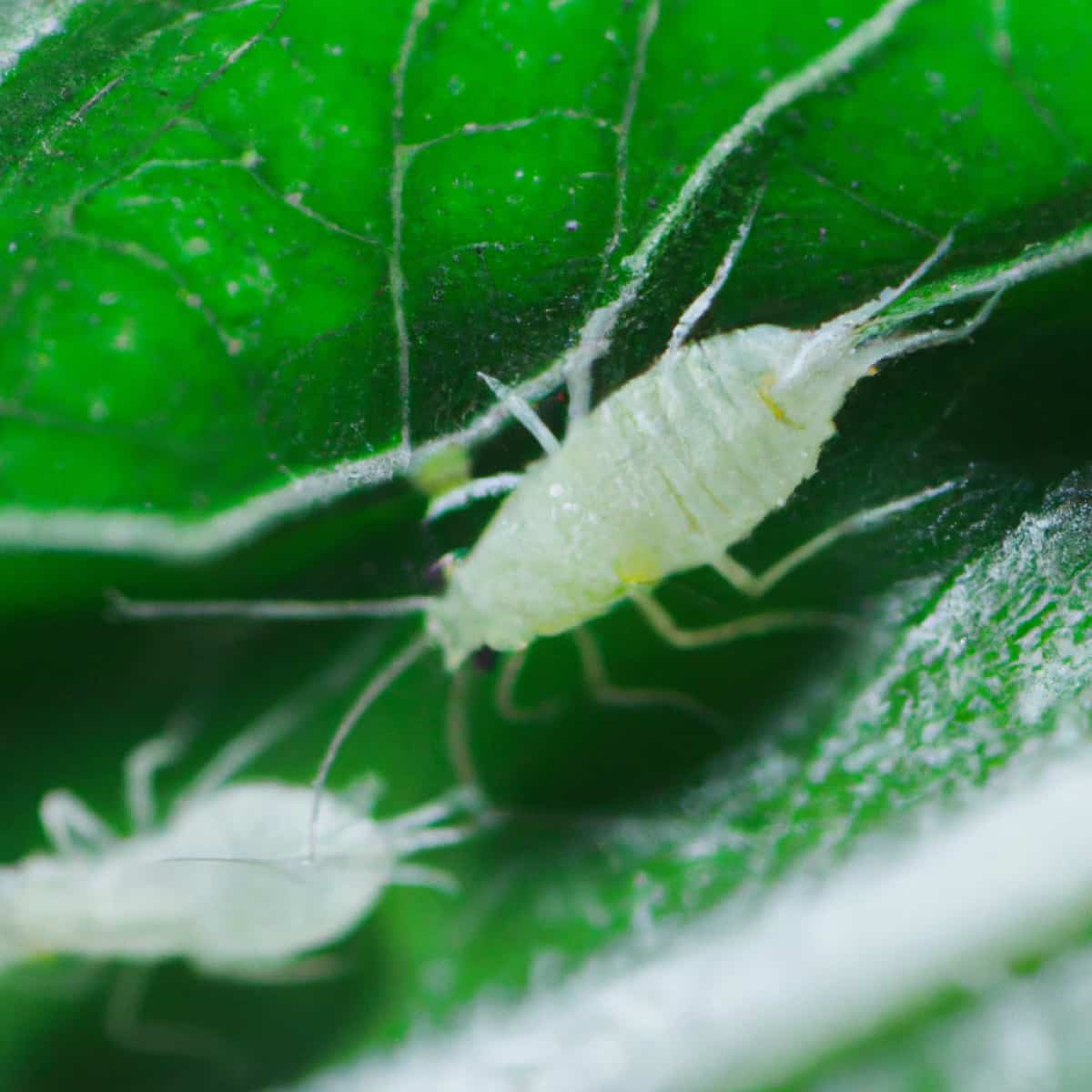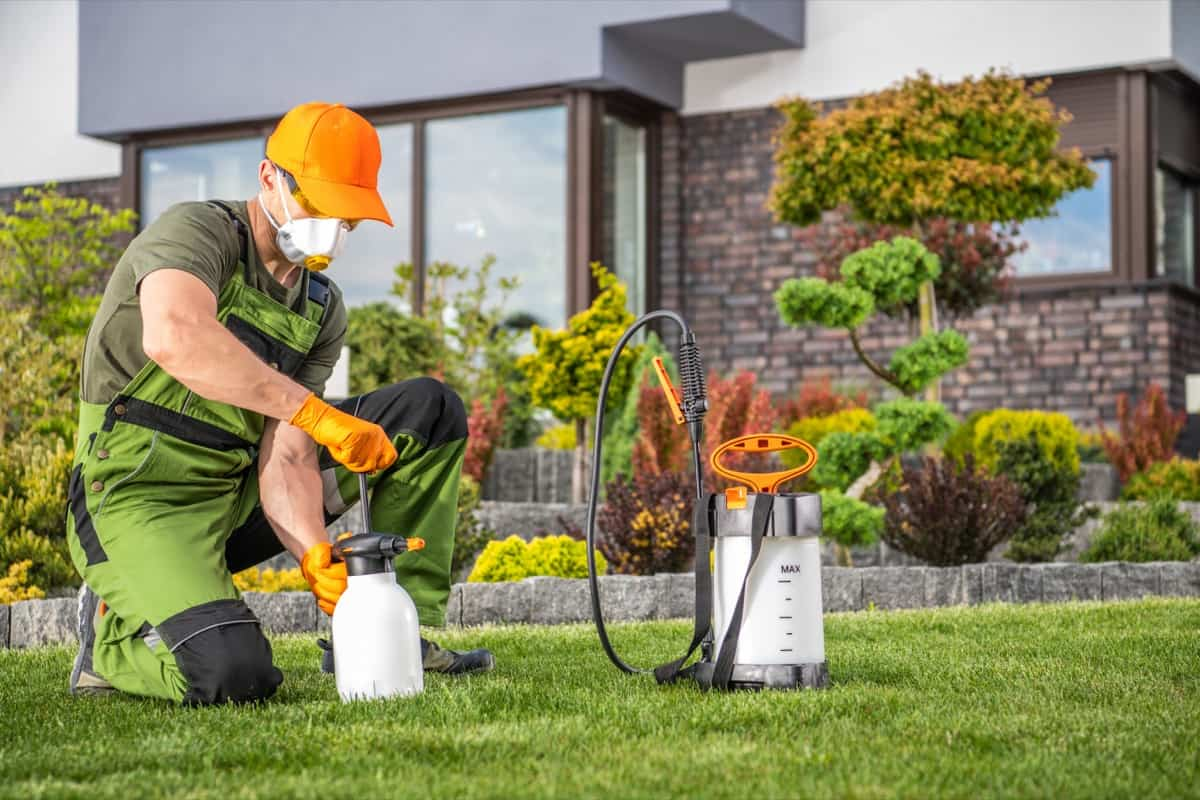Welcome to this blog on managing thrips in your home garden! Thrips, tiny insects, can harm your plants by puncturing them and sucking out their juices, resulting in stunted growth, deformed leaves, and even mortality. However, you can keep these pests under control and safeguard your valued plants by taking a few easy measures. This blog will provide easy-to-follow tips and tricks for managing thrips in your home garden, whether you protect your plants with Cultural, Biological, Chemical, or Organic Methods.

How to Manage Thrips in Home Garden
What are Thrips?
Thrips are small insects that commonly infest both indoor and outdoor plants. They cause harm to plants by feeding on their sap and chewing their tissues. These pests thrive in warm weather, and their population can grow rapidly if left unchecked. Due to their tiny size and quick multiplication, thrips can go unnoticed until they cause serious damage. Symptoms of a thrip infestation can be similar to those caused by other pests or diseases, so it’s essential to identify the source of the problem before attempting to treat affected plants.
Lifecycle of Thrips
- Thrips’ life cycle varies depending on the species and location.
- Adults and larvae overwinter in plant debris, underground or inside bark.
- In spring, females lay 25 to 80 eggs in plant tissue.
- Thrips eggs hatch in 5 days and develop into adults in 2 to 3 weeks.
- The average lifespan of thrips is 35 to 45 days.
- During the growing season, 15 new generations can be produced.
- Thrips can cause serious damage to plants, so early detection and proper management are essential to control their population.
Identification of Thrips in Home Garden
Identifying thrips in a home garden can be challenging due to their small size. One way to identify them is by shaking a plant over a blank sheet of white paper. Thrips will fall off, and their darker bodies will be visible on the white surface. Using a 10- to 15-power magnifying glass can help identify the pest. Sticky traps can also capture thrips for monitoring and identification in a home garden. It’s best to use blue traps as they are more effective for trapping thrips and can be easily seen against blue, a common color in most gardens.
Garden Plants which are affected by Thrips
Thrips can affect a wide range of plants in a home garden. Some commonly affected crops include beans, cabbage, carrots, cucumber, peas, peppers, potatoes, squash, strawberries, and tomatoes. Flowers in shades of white, yellow, and blue, such as begonias, chrysanthemums, gladiolus, and roses, are also susceptible to thrips.
Houseplants with broad, thin leaves, like alocasia, calathea, dracaena, and palms, are most at risk of thrip infestations. Woody shrubs and ornamentals like azaleas, hibiscus, magnolias, and viburnums can also be affected. Regular monitoring and early detection can help prevent and control thrips in a home garden.
In case you missed it: How to Manage Clubroot in Home Garden: Symptoms, Causes, Cultural, Biological, Chemical, Natural, and Organic Control

Symptoms of Thrips attack on Home Garden
- Thrips can cause various types of damage to plants in a home garden. Symptoms may include streaked, yellowed, bleached leaves and flower petals, deformed buds, and scabby or deformed fruit.
- The damage caused by thrips is often mistaken for nutritional deficiencies or diseases since the symptoms can be similar. In severe infestations, plants may appear stunted or silvery due to the loss of plant sap.
Thrips Management in Home Garden
Thrips management in a home garden involves several practices, such as regular monitoring, cultural controls, physical barriers, insecticides, and biological control methods. Implementing these measures can help prevent and control thrips infestations, protecting plants from damage and improving overall plant health.
Cultural Management of Thrips in Home Garden
- Inspect new plants before introducing them to your garden, and isolate them for a few weeks to ensure they’re not harboring pests.
- Keep your plants healthy by providing them with proper watering, fertilization, and pruning.
- Clean up debris and weeds that may harbor thrips, especially around more vulnerable plants.
- Choose plant varieties that are resistant to thrips.
- Repel thrips by planting garlic, basil, or oregano around more vulnerable plants.
- Avoid overfertilizing, which can attract thrips to tender new growth.
- Treatment of susceptible plants.
Biological Management of Thrips in Home Garden
- Biological control of thrips in home gardens can involve using natural enemies such as predatory thrips, green lacewings, minute pirate bugs, mites, and parasitic wasps to control plant-feeding thrips.
- To promote the growth of beneficial populations of these organisms, avoid using persistent pesticides, rinse the dust off small plants, and grow a variety of plant species.
- Different types of thrips have specific natural enemies important in their control, such as minute pirate bugs and green lacewing larvae for Cuban laurel thrips, Euseius mites for citrus thrips, and Thripobius semiautos for greenhouse thrips. Parasitized thrips larvae turn black, swell around the head, and do not move.
Chemical Management of Thrips in Home Garden
- Thrips can be challenging to control effectively with insecticides due to their mobility, feeding behavior, and protected egg and pupal stages.
- While chemical control is not typically necessary, contact insecticides that do not leave persistent residues can be effective for greenhouse thrips and other species that feed openly on plants.
- These products include azadirachtin, insecticidal soaps, narrow-range, neem, and pyrethrins. Spinosad is generally more effective against thrips than the above products.
- Systemic insecticides, such as neonicotinoids, can provide relatively rapid control. Still, they have a low, moderate, or severe adverse impact on natural enemies and pollinators, varying with the product, situation, species, and life stage.
Organic Management of Thrips in Home Garden
- Use Blue sticky nets to catch adult thrips and prevent egg laying.
- Spray neem oil on plants to deter thrips and other pests.
- Insecticidal soap kills thrips and their eggs. It breaks down the insect’s outer layer.
- Use homemade garlic spray to deter thrips. Crush some garlic bulbs and mix with water. Steep overnight, strain, and mist plants.
- Use fossilized algal powder diatomaceous earth. Dehydrating insects repel thrips.
- Reflective soil deters thrips. Thrips cannot find plants due to the shiny surface.
In case you missed it: How to Manage Powdery Mildew in Home Garden: Symptoms, Causes, Cultural, Biological, Chemical, Natural, and Organic Control

Conclusion
Thrips can be difficult to control in home gardens due to their small size and ability to reproduce rapidly. On the other hand, a combination of cultural, biological, chemical, and organic methods can successfully reduce their populations. To select the most suitable management strategies, it is critical to identify the symptoms and causes of thrip infestations correctly.
- Beneficial Insects in Pest Management
- Natural Solutions for Pest Control in Flower Gardens
- Types of Fungicides Used in Agriculture
- Common Issues in the Fruit Development Stage of Pomegranate Farming
- Fruit Development Issues in Papaya: Easy Solutions and Treatment
- Soil-Borne Diseases and How to Protect Your Plants
- Practices to Prevent Disease Spread in the Garden
- From Wilted to Thriving: How to Treat Root Rot Naturally in Houseplants
- Natural Remedies to Cure Brown Spots on Fig Tree Leaves